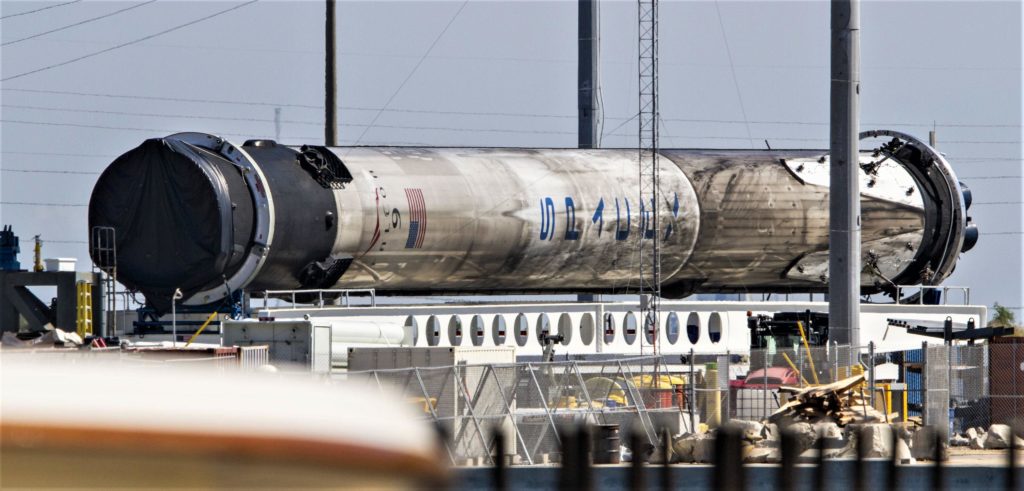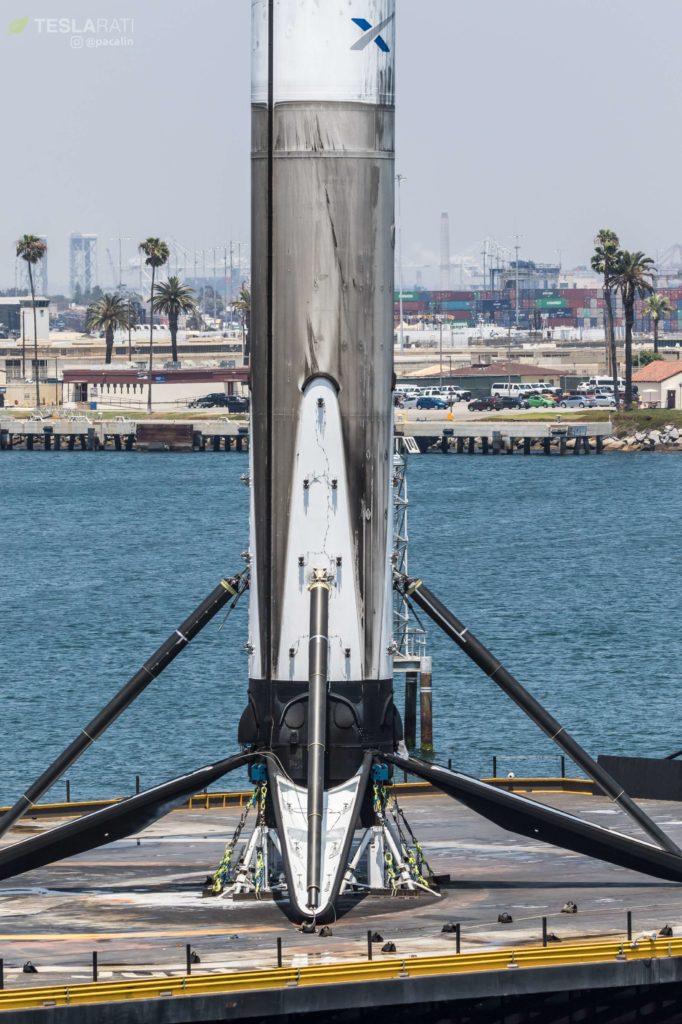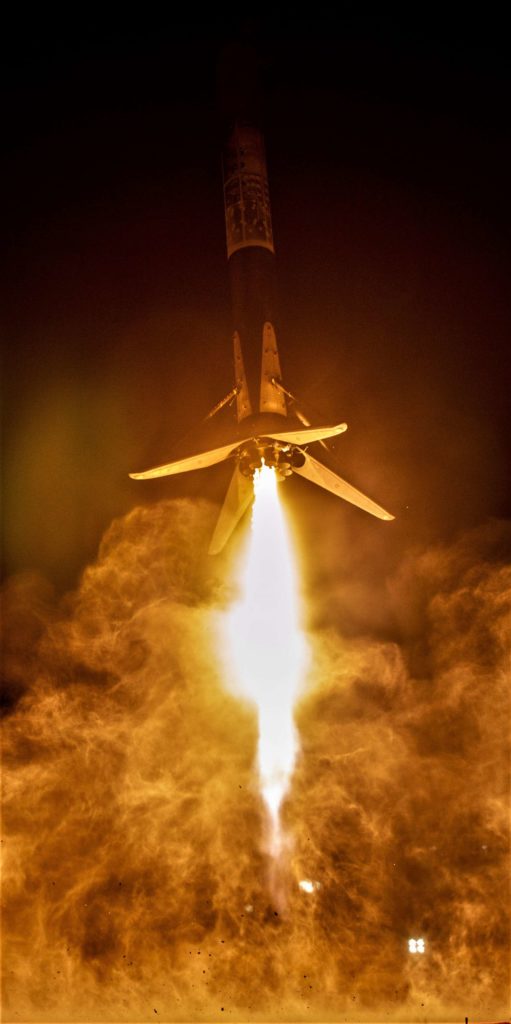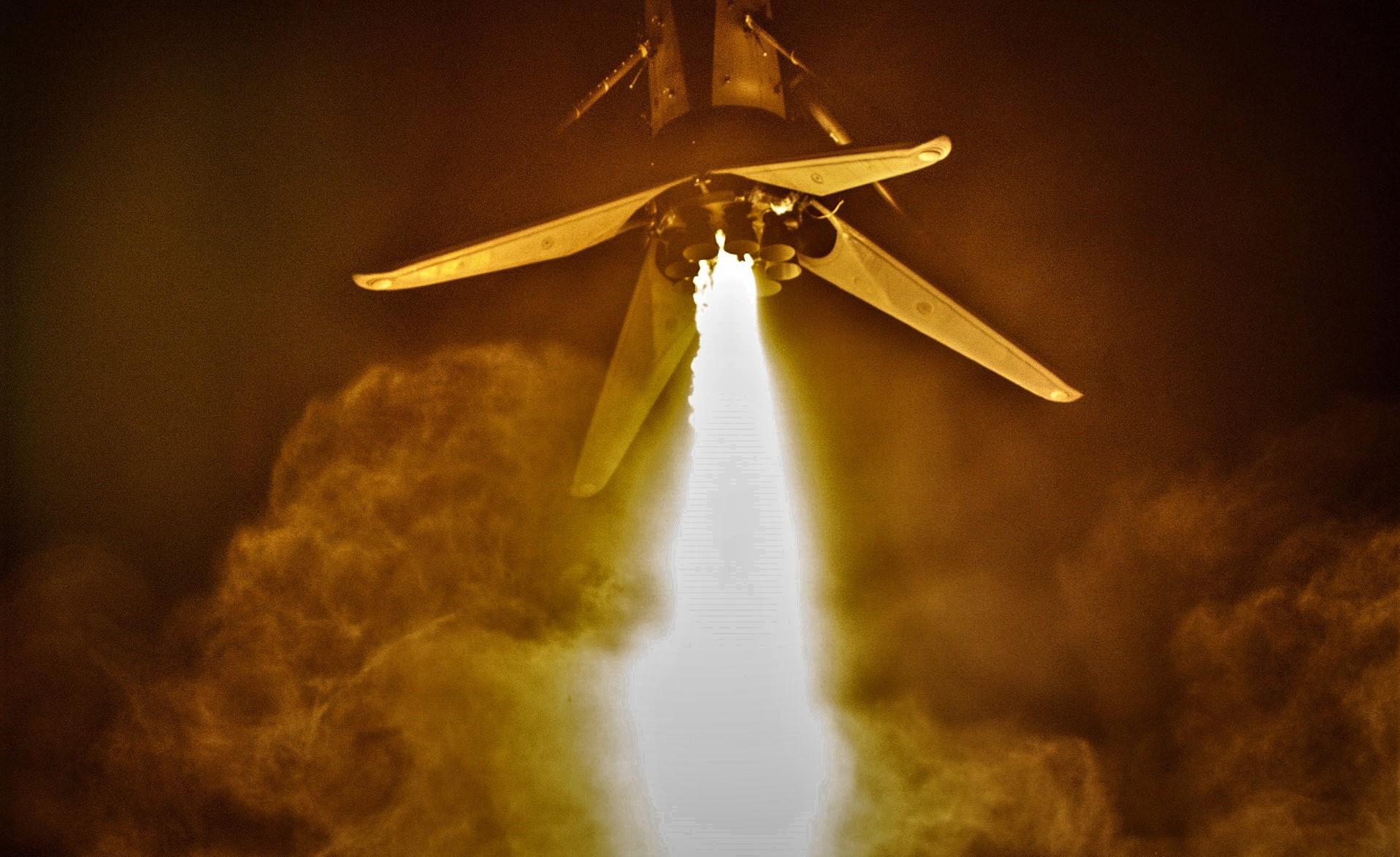

News
SpaceX’s next step towards airplane-like Falcon 9 reusability expected in 2018
Speaking at an impromptu IAC 2018 talk, Vice President of Build and Flight Reliability Hans Koenigsmann confirmed earlier this month that SpaceX is aiming to conduct its first triple reuse of a Falcon 9 booster before the year is out.
While not entirely confident on the specific mission it would end up flying on, Koenigsmann floated the company’s next Vandenberg, CA launch – Spaceflight Industry’s SSO-A rideshare – as a prime candidate, tentatively targeting November 19th.
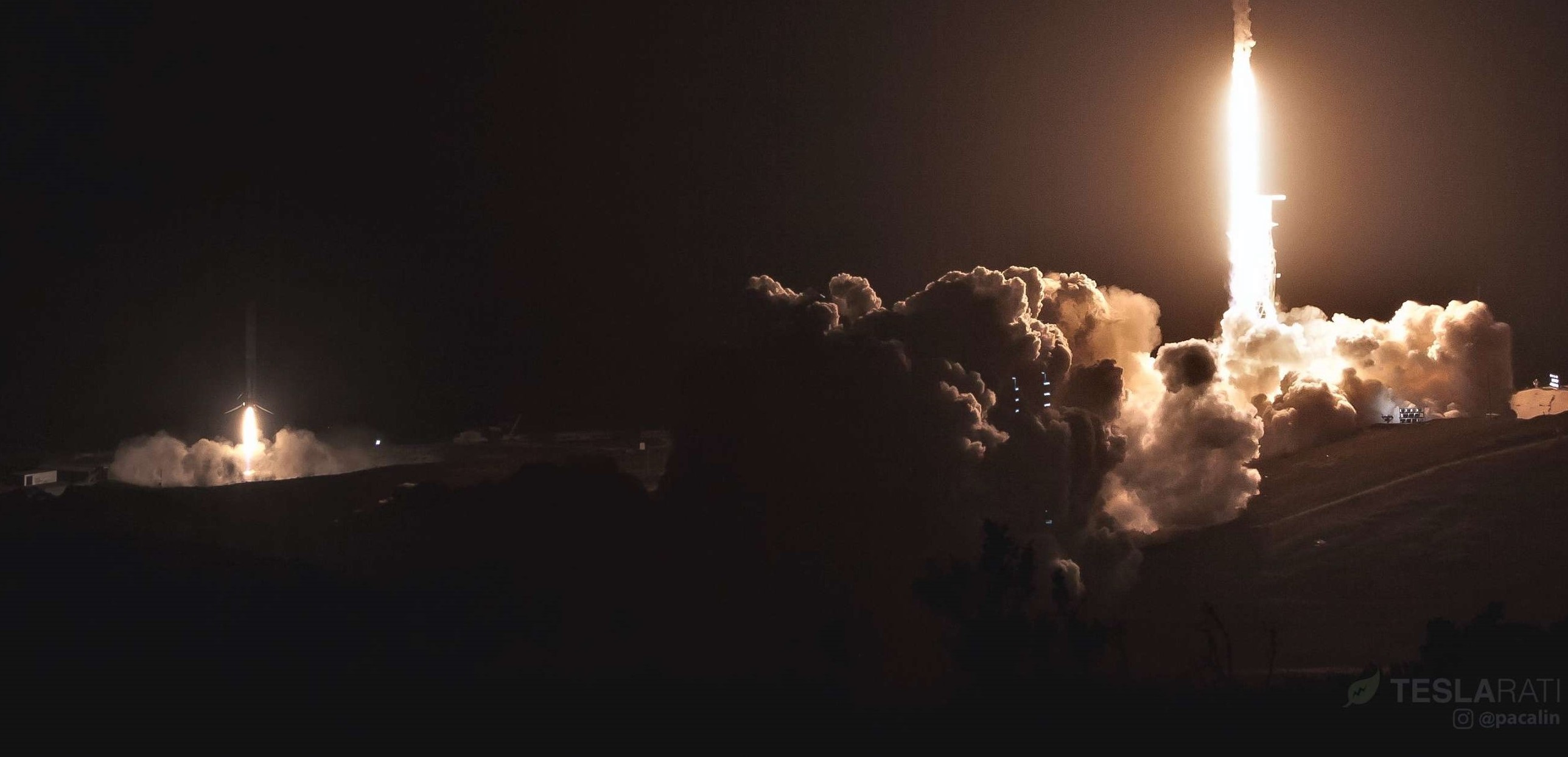
As of November 19th, only two Falcon 9 Block 5 boosters will be candidates for a third reuse – B1046 and B1048. Falcon 9 B1048 launched for the second time just days ago, placing Earth observation satellite SAOCOM 1A in orbit before performing the first return-to-launch-site (RTLS) recovery on the West Coast, also marking the debut of SpaceX’s long-dormant LZ-4 landing zone. Aside from playing a role in one of the most spectacular launch-related light shows ever created, B1048 is noteworthy for being SpaceX’s second-fastest Falcon 9 booster turnaround, taking just 74 days to go from its first launch and landing to its second operational use.
While B1046 – launched first on May 11th and again on August 7th – will have had more than three months of potential refurbishment by SSO-A’s Nov. 19 launch target, both of its two launches involved relatively high-energy profiles with heavy payloads, resulting in higher (and thus more damaging) heating during reentry. B1048, on the other hand, has launched a heavy set of 10 Iridium NEXT satellites into a low-energy orbit and then launched the much lighter SAOCOM 1A spacecraft into an equally low orbit, translating to much more forgiving reentries and thus much easier refurbishment.
Later at IAC 2018, Hans spoke in more detail about the leading challenges facing SpaceX in this relatively mature stage of reusable rocketry optimization. Most notably, he seemed to imply that the most difficult aspect of refurbishing Falcon 9 boosters was damage caused to its nine Merlin 1D engines while taking the brunt of Falcon 9’s reentry inertia, not hugely surprising given the awkward geometry and sheer force behind a booster traveling more than 2000 meters per second.
- Falcon 9 Block 5 completed its first launch on May 11, carrying the Bangabandhu-1 communications satellite to geostationary transfer orbit. (Tom Cross)
- It’s currently unclear whether B1046 or B1048 will become the first SpaceX rocket to fly three times. (Tom Cross)
- Falcon 9 B1048 returned to Port of Los Angeles aboard drone ship Just Read The Instructions after its first launch. July 27. (Pauline Acalin)
- Falcon 9 B1048.2 landed at LZ-4 after its second successful launch. (SpaceX)
It’s possible that SpaceX will set B1046 up as the pathfinder for all future reusability milestones, including the 3rd, 4th, and 5th booster flights and beyond. However, B1048 may well be in better condition, is already directly stationed at its refurbishment facility, and will have another relatively low-energy launch ahead of it if assigned to SSO-A. Critically, flying for the third time on SSO-A – as few as 43 days after its second orbital launch – will require B1048 to break SpaceX’s record for faster Falcon 9 booster turnaround by more than 50%, despite the fact that it would have two full operational missions under its belt.
It may sound more mundane than other crowning SpaceX achievements, particularly with the focus on numbers that might seem arbitrary and unimportant at first glance, but it’s actually difficult to overstate just how important the third reuse of a Falcon 9 booster is, particularly if that pathfinder happens to break refurbishment records at the same time.
SpaceX’s ultimate goal is to build and launch rockets with airplane-like reusability and reliability, eventually flying boosters and other components upwards of 100-1000 times each, and the jump from two flights per core to three will be the best evidence yet that the company is making rapid progress in that direction.
For prompt updates, on-the-ground perspectives, and unique glimpses of SpaceX’s rocket recovery fleet check out our brand new LaunchPad and LandingZone newsletters!

Elon Musk
SpaceX issues statement on Starship V3 Booster 18 anomaly
The incident unfolded during gas-system pressure testing at the company’s Massey facility in Starbase, Texas.

SpaceX has issued an initial statement about Starship Booster 18’s anomaly early Friday. The incident unfolded during gas-system pressure testing at the company’s Massey facility in Starbase, Texas.
SpaceX’s initial comment
As per SpaceX in a post on its official account on social media platform X, Booster 18 was undergoing gas system pressure tests when the anomaly happened. Despite the nature of the incident, the company emphasized that no propellant was loaded, no engines were installed, and personnel were kept at a safe distance from the booster, resulting in zero injuries.
“Booster 18 suffered an anomaly during gas system pressure testing that we were conducting in advance of structural proof testing. No propellant was on the vehicle, and engines were not yet installed. The teams need time to investigate before we are confident of the cause. No one was injured as we maintain a safe distance for personnel during this type of testing. The site remains clear and we are working plans to safely reenter the site,” SpaceX wrote in its post on X.
Incident and aftermath
Livestream footage from LabPadre showed Booster 18’s lower half crumpling around the liquid oxygen tank area at approximately 4:04 a.m. CT. Subsequent images posted by on-site observers revealed extensive deformation across the booster’s lower structure. Needless to say, spaceflight observers have noted that Booster 18 would likely be a complete loss due to its anomaly.
Booster 18 had rolled out only a day earlier and was one of the first vehicles in the Starship V3 program. The V3 series incorporates structural reinforcements and reliability upgrades intended to prepare Starship for rapid-reuse testing and eventual tower-catch operations. Elon Musk has been optimistic about Starship V3, previously noting on X that the spacecraft might be able to complete initial missions to Mars.
Investor's Corner
Tesla analyst maintains $500 PT, says FSD drives better than humans now
The team also met with Tesla leaders for more than an hour to discuss autonomy, chip development, and upcoming deployment plans.

Tesla (NASDAQ:TSLA) received fresh support from Piper Sandler this week after analysts toured the Fremont Factory and tested the company’s latest Full Self-Driving software. The firm reaffirmed its $500 price target, stating that FSD V14 delivered a notably smooth robotaxi demonstration and may already perform at levels comparable to, if not better than, average human drivers.
The team also met with Tesla leaders for more than an hour to discuss autonomy, chip development, and upcoming deployment plans.
Analysts highlight autonomy progress
During more than 75 minutes of focused discussions, analysts reportedly focused on FSD v14’s updates. Piper Sandler’s team pointed to meaningful strides in perception, object handling, and overall ride smoothness during the robotaxi demo.
The visit also included discussions on updates to Tesla’s in-house chip initiatives, its Optimus program, and the growth of the company’s battery storage business. Analysts noted that Tesla continues refining cost structures and capital expenditure expectations, which are key elements in future margin recovery, as noted in a Yahoo Finance report.
Analyst Alexander Potter noted that “we think FSD is a truly impressive product that is (probably) already better at driving than the average American.” This conclusion was strengthened by what he described as a “flawless robotaxi ride to the hotel.”
Street targets diverge on TSLA
While Piper Sandler stands by its $500 target, it is not the highest estimate on the Street. Wedbush, for one, has a $600 per share price target for TSLA stock.
Other institutions have also weighed in on TSLA stock as of late. HSBC reiterated a Reduce rating with a $131 target, citing a gap between earnings fundamentals and the company’s market value. By contrast, TD Cowen maintained a Buy rating and a $509 target, pointing to strong autonomous driving demonstrations in Austin and the pace of software-driven improvements.
Stifel analysts also lifted their price target for Tesla to $508 per share over the company’s ongoing robotaxi and FSD programs.
Elon Musk
SpaceX Starship Version 3 booster crumples in early testing
Photos of the incident’s aftermath suggest that Booster 18 will likely be retired.

SpaceX’s new Starship first-stage booster, Booster 18, suffered major damage early Friday during its first round of testing in Starbase, Texas, just one day after rolling out of the factory.
Based on videos of the incident, the lower section of the rocket booster appeared to crumple during a pressurization test. Photos of the incident’s aftermath suggest that Booster 18 will likely be retired.
Booster test failure
SpaceX began structural and propellant-system verification tests on Booster 18 Thursday night at the Massey’s Test Site, only a few miles from Starbase’s production facilities, as noted in an Ars Technica report. At 4:04 a.m. CT on Friday, a livestream from LabPadre Space captured the booster’s lower half experiencing a sudden destructive event around its liquid oxygen tank section. Post-incident images, shared on X by @StarshipGazer, showed notable deformation in the booster’s lower structure.
Neither SpaceX nor Elon Musk had commented as of Friday morning, but the vehicle’s condition suggests it is likely a complete loss. This is quite unfortunate, as Booster 18 is already part of the Starship V3 program, which includes design fixes and upgrades intended to improve reliability. While SpaceX maintains a rather rapid Starship production line in Starbase, Booster 18 was generally expected to validate the improvements implemented in the V3 program.
Tight deadlines
SpaceX needs Starship boosters and upper stages to begin demonstrating rapid reuse, tower catches, and early operational Starlink missions over the next two years. More critically, NASA’s Artemis program depends on an on-orbit refueling test in the second half of 2026, a requirement for the vehicle’s expected crewed lunar landing around 2028.
While SpaceX is known for diagnosing failures quickly and returning to testing at unmatched speed, losing the newest-generation booster at the very start of its campaign highlights the immense challenge involved in scaling Starship into a reliable, high-cadence launch system. SpaceX, however, is known for getting things done quickly, so it would not be a surprise if the company manages to figure out what happened to Booster 18 in the near future.

